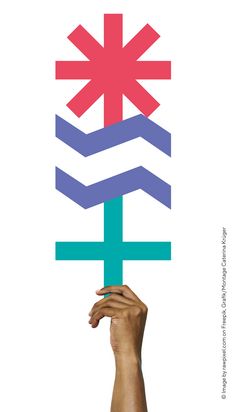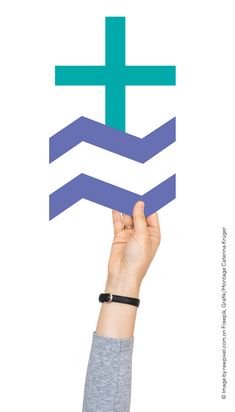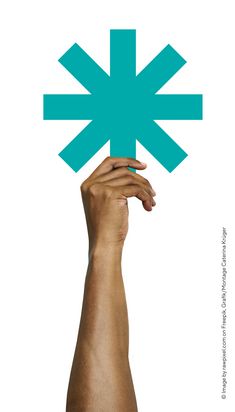Using language and images at BOKU: gender-sensitive, diversity-aware, inclusive
Further Information and examples concerning the asterisk
Equivalently, alternative characters or punctuation such as the underscore or the colon can be used besides the asterisk. (For example Profess_orinnen, Professor:innen). Underscore, colon and asterisk express the diversity of genders, contrary to the medial capital I (Binnen-I) which is used in German to address women and men.
However, the representative study Recommendations for a Gender-fair, Digitally accessible Language (available in German – Empfehlung zu gendergerechter, digital barrierefreier Sprache) suggests the asterisk as the preferred symbol regarding usability, accessibility and user acceptance
Compounds may be hyphenated in order to increase readability.
EXAMPLES Compounds: Mentor*innen-Beziehung (mentor-relationship), Expert*innen-Organisation (organization consisting of experts) etc.
Using gender neutral wording
Not all persons identify with female or male gender attributions. Using gender neutral forms of address in personal communication and non-binary wording in written communication allows to also address humans outside of the binary spectrum of genders.
In German gender-neutral terms can help to simplify language as they are an alternative to gendered expressions. Their benefit: they do not refer to gender and thus do not perpetuate binary gender norms.
EXAMPLES: Studierende (persons who study), Lehrende (persons who teach), Forschende (persons who do research), BOKU Angehörige (members of BOKU), Mitarbeitende (persons employed in an organization), Leitung (persons with executive responsibilities), Personal (staff), …
Written forms of address
Gender neutral or non-binary wording can be used in individualized mass emailing.
EXAMPLES
Guten Tag Vorname Nachname – Good Day First Name Last Name
Sehr geehrte*r Vorname Nachname – Esteemed First Name Last Name
Liebe*r Vorname (Nachname) – Dear First Name (Last Name)
EXAMPLES OF PLURAL
Sehr geehrte Lehrende / Studierende / Führungskräfte – Esteemed persons teaching / persons studying / persons with management responsibilities
Liebe Teammitglieder / Teilnehmende / Interessierte – Dear team members / attendees / persons interested
When personally communicating with persons you know identify as men or women, you can continue to use gender specific binary forms of address.
In their 2021 guideline Gender-sensitive Language – Dialogue as Equals (available in German – Geschlechtssensible Sprache - Dialog auf Augenhöhe), the Austrian Ombud for Equal Treatment explains why communication should be sensitive to gender, which legal framework governs its use as well as the roles played by accessibility and technical infrastructure.
Who’s visible? Who isn’t?
EXAMPLE
When depicting families, for example, this implies that attention needs to be payed to the diverse concepts of how family life can be lived and to refrain from showing white nuclear families with a biological mother, a biological father and biological children.
Which concepts of family life often remain unseen? Persons caring for other persons, single-parent households, family members with disabilities, BIPoC* Families, queer parenthood, …
We can rethink and disrupt topic-specific representations, for example, by rendering people of colour** and people with disabilities visible as part of our every-day reality instead of exclusively using them to illustrate the topics of internationality or inclusion, respectively.
Further information as well as links to image-platforms are shared on allcodesarebeautiful
The photo database Gesellschaftsbilder (SocietyPix) puts the focus on various aspects of diversity.
* the abbreviation BIPoC denotes Black, Indigenous and People of Colour,
** People of Colour used in an analytical and political context describes the shared experiences of non-white persons; further information Link
Guideline Inclusive Language Use
Johannes Kepler University Linz offers an accessible and plain treatment of inclusive and fair language with the abridged version of its inclusive language guideline (available in German – Inklusive Sprache – Was bedeutet das kurz erklärt?)
eAccessibility and Accessibility
Furnishing images with alternative texts and videos with subtitles renders them more accessible.
Content becomes more inclusive when documents are framed in a manner that pays attention to the reduction of barriers rendering them more accessible for people using assistive technologies.
Assistive technologies are technological devices such as screenreaders that aid people with visual or similar impairments.
Continue to Creating Accessible Documents (available in German)
Digital accessibility refers to technical and content requirements and takes into account the principles of perceptibility, usability, understandability and stability defined in the Web Content Accessibility Guidelines (WCAG).
Visit https://short.boku.ac.at/accessibility for further information on eAccessiblity and Accessiblity at BOKU (available in German)
Useful Links for Teaching at the University
Berlin Free University provides helpful information on Gender Senstivity in English and Gender- and Diversity Conscious Use of Images in Teaching.
The booklet "trans. inter*. nicht-binär" (available in German) explores how to create environments of teaching and studying that are respectful, reflective of gender, and critical of discrimination.
The manual “Taking into Account Diversity in Teaching” (available in German – Diversität in der Lehre berücksichtigen) of TU Graz asks why diversity in teaching is important. It is intended for everyone involved in passing on knowledge.
Stating Academic Titles
German academic titles can render gender visible.
BEISPIELE Dr. / Dr.in (female doctor) / Dr.x / Dr.* (x and * are used to signify a person outside the gender binary)
Specifications of the Federal Ministry of Education, Science and Research on “Considering gender in academic titles and in the degree certificate” (available in German – Berücksichtigung des Geschlechts in akademischen Titeln und in der Verleihungsurkunde).
Using Pronouns
Besides the common German prononouns sie / ihr (she / her) or er / ihm (he / him) additional (neo)pronouns may be used such as they / them, dey / deren, hen / hens, xier, none, …
Additional information in your email signature can help in order to be approached and addressed accordingly.
EXAMPLES (Title) First Name Last Name (Title) [sie/ihr | she/her]
EXAMPLES “My pronouns: he/him. Please let me know which pronouns you use.”
EXAMPLES “I appreciate gender neutral forms of address such as Good Day / Dear / Esteemed / Hello + First Name Last Name”
EXAMPLES “I do not use pronouns and appreciate being addressed by name. In order to be able to address you correctly in the future, I look forward to learning about your pronouns”
EXAMPLES “I use Dx and they/them pronouns. Please let me know yours, thank you.”
EXAMPLES (Ger/Eng): [ Pronomen sie/ihr | Pronouns she/her ]
Using and Pronouncing Names
Individual usage of (first) names may differ from the names registered in official documents. The information provided in the signature can be used to directly address people as well as contact them in written form in accordance with their names.
Email signatures may also contain information concerning the proper pronunciation of Names:
EXAMPLES Link to an audio recording (e.g. via Soundcloud) entitled “How to pronounce my name”
Framing presentations
For hosts of meetings, panels, workshops, committee meetings, etc. a number of tools exist to provide formats of exchange and dialogue characterized by communication that is both fair and full of respect.
EXAMPLE Introduction
Prior to the event, members of panels may be asked how they envision being introduced.
Besides name and occupation/position introductions may refer to the pronouns used.
EXAMPLE Time limits for speakers & respectful communication
Unfortunately, it sometimes happens that individuals occupy a considerable amount of space and speaking time while others hardly get a word in. Hosts find themselves in a position to create equilibrium and can also set the framework of the podium/the workshop/the meeting/committee meetings. They can also consciously choose to hand over the floor to those who have participated to a lesser extent.
In order to set the space for respectful communication, the host may inform all participants about the general rules of communication and suggest a few rules of conduct:
* motivating all participants to meet each other in as unbiased a manner as possible
* allowing the person speaking to finish uninterrupted
* refraining from negative comments, lecturing others, or non-verbal cues (for example rolling of the eyes, grinning, consciously turning away)
* allotting equitable time for speaking
EXAMPLE Using spoken language that is conscious of gender
In German, words such as Professor*in can be pronounced with a “glottal stop“* or with a short pause, consciously rendering audible the inclusion of all genders. The use of neutral wordings in German forgoes the gender binary and addresses all genders, for example Anwesende (the people present), Publikum (audience), Teilnehmende (participants).
If women are to be addressed specifically, the feminine form may be used, such as Professorinnen (female professors), Studentinnen (female students), Forscherinnen (female researchers). Expressively addressing women and men can be done by referring to both gendered forms, for example Autorinnen und Autoren (female and male authors), Besucherinnen und Besucher (female and male visitors). Bear in mind, however, that gender identity may not always be visible on the outside. When in doubt it is better to use forms of address that are gender neutral.
*the “glottal stop” is referred to in German as Stimmritzenverschlusslaut (approximately translated as “the sound emanated by closing the glottis”). In German the glottal stop is present before all words that start with a vowel (a, e, i, o, u, ä, ö, ü) but also within words such as aufessen(to eat up) or beinhalten (to include).
Qualification requirements – ethnic background
When stating qualifications, it is important to refrain from using discriminatory wording connected to national, regional or ethnic-cultural background.
EXAMPLE Language proficiency
Instead of phrasings such as “native German speaker“, “German spoken and written at native-level proficiency” or “perfect language skills” (nobody is able to communicate in perfect German!), more precise specifications may be made in relation to the language requirements of the respective vacancy:
* very good command of spoken and written German and English
* highly proficient in German
* German Level C2
Language requirements must match the requirements of the job advertised, a higher-level position may be preconditioned upon higher language proficiency.
Simple, manual labor without customer interaction does not necessitate excellent language skills, for example. In such a case a “good command of German” can be sufficient. In the case of academic positions with teaching obligations, an excellent command of German and English may well be a requirement.
EXAMPLE Driver’s license / required driving skills
Instead of requiring for example an “Austrian driving license B“, the following wordings may be used:
* driver’s license/permit B
* appropriate driver’s license for driving multi-track motor vehicles in Austria
Qualification requirements – age
When indicating qualification, it is important to avoid discriminatory wording connected to age.
EXAMPLES
Phrases such as “several years of experience” or “entry-level position” are often associated with age and may discriminate against individual persons or exclude them from applying.
Suitable phrasings that should be preferred:
* relevant / specialized experience
* substantial / solid / proven track record of experience
When advertising tenure track positions the phrase “several years of professional academic experience” can be included, given that this represents a prerequisite for the career path connected to the position.
“Young scientists” or “we are a young team” are wordings that may exclude older persons because both descriptions refer to age. The following phrases are more suitable:
* junior scientists
* early researcher
* we are a diverse team
Qualification requirements – gender
When indicating qualification, it is important to avoid discriminatory wording connected to gender. Instead gender-neutral phrases or the asterisk can often be used.
EXAMPLES
Kund*innen, Stakeholder*innen, Projektpartner*innen (customers, stakeholders, project partners – equally addressing female, male and gender-diverse persons)
Dissertation (statt Doktorarbeit) (dissertation (instead of doctoral thesis))
Meister*in-Prüfung (statt Meisterprüfung) (master craftsperson examination (instead of master craftsman examination))
English job descriptions that are not Anglicisms* are neutral in themselves and may be used accordingly, for example “System Engineer“, if required the German addition of “(m/w/d)” (male/female/gender-diverse) represents an option.
More common Anglicisms in German such as Manager or User will be gendered by using the asterisk, for example Manager*in (managing person) or User*innen (female, male, gender diverse users).
EXAMPLE job application headshot**
Job applications are to be assessed without bias. The outward appearance of applicants is in no way connected to their qualification. When selecting candidates, subjective criteria should be excluded, therefore job advertisements may request that applicants DO NOT include a photo.
Gender-fair wording in German job advertisements may be checked with the FührMINT Gender Decoder (available in German).
The video Recruitment Bias in Research Institutes addresses biases that may arise further on in the application process.
Heidelberg University offers an Online Tutorial on Gender Bias in Appointment Procedures.
* Anglicisms are words and phrases that have been borrowed from the English language.
** The practice of including headshots in applications still represents the predominantly unquestioned norm in Austria.




